Report highlights ‘nightmare’ of NSW mental health hospitals
A REVIEW launched by The Daily Telegraph after the horrific death of mother-of-two Miriam Merten has highlighted the “nightmare” of NSW mental health hospitals that lock up patients like “prisons”.
NSW
Don't miss out on the headlines from NSW. Followed categories will be added to My News.
THE “nightmare” of NSW mental health hospitals that lock up patients like “prisons” and where “discrimination” is found “at all levels” of staff has been laid bare in a landmark report launched after an investigation by The Daily Telegraph.
The report — conducted by NSW chief psychiatrist Murray Wright — has revealed how a “custodial” culture that “promotes stripsearching … and other punitive interventions” has become the norm for treating our most vulnerable patients.
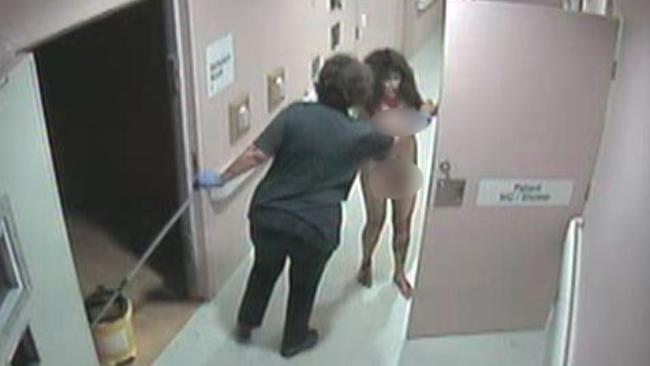
And these patients are often being dumped in “unhygienic” and “poor” seclusion rooms that are “not clean or properly maintained” and don’t have “access to bathrooms or fresh air”.
Even staff have admitted an environment has “developed” in our mental health hospitals were “common humanity is not recognised”.
Some of the worst conditions are in our emergency departments too — where mental health patients are “completely ignored” and it’s left to security staff to “observe and care”.
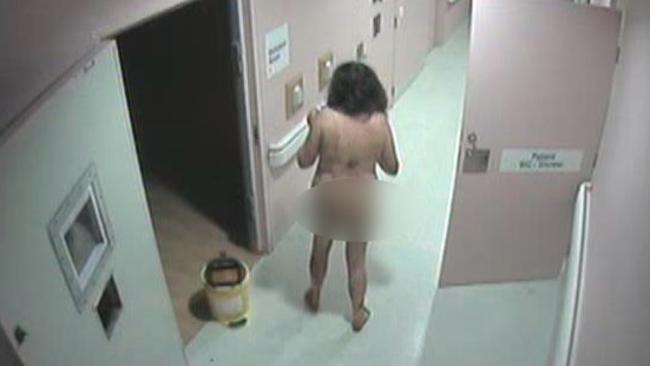
They are often restrained in high dependency units “built like prisons” and left “trapped, claustrophobic and agitated”.
The major review was launched in May after The Daily Telegraph unearthed “appalling” CCTV footage of mother-of-two Miriam Merten dying from brain injuries after being dumped drugged and naked in a tiny seclusion room for hours at Lismore Base Hospital in 2014.
Ms Merten fell and hit her head at least 20 times in seclusion.
READ MORE
WHY WAS MIRIAM MERTEN ALLOWED TO DIE?
NURSE HAD HISTORY OF ABUSING PATIENTS
INQUIRY INTO HORROR HOSPITAL DEATH ‘BURIED’
Experienced nurse Christine Borthistle was in charge of the care of Ms Merten even though the facility had investigated the senior nurse years earlier for “derogatory and disrespectful” comments to patients.

The Wright review found her story was just one example of a system at breaking point.
“Our daughter will never be the same following her experiences as a child and adolescent being restrained and placed in seclusion. The nightmares and trauma from these experiences continue to affect her every day, both mentally and physically,” one parent wrote to the review.
A patient recalled how “time seemed to take forever” when she was locked in seclusion.
The report said “many (patients) reported feeling dehumanised and stripped of their sense of autonomy, agency, dignity and human rights”.
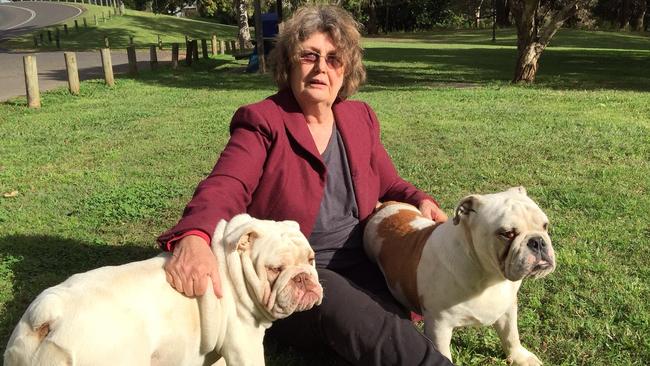
“Some consumers and carers reported that seclusion and restraint were used as a threat or a punishment; as a means of enforcing compliance and obedience,” it found.
“This form of coercive compliance has more in common with custodial correction systems than it does with a therapeutic setting.
“It is a major departure from the intent of seclusion and restraint policies and ignores the role of recovery and trauma-informed care in contemporary mental health care.”
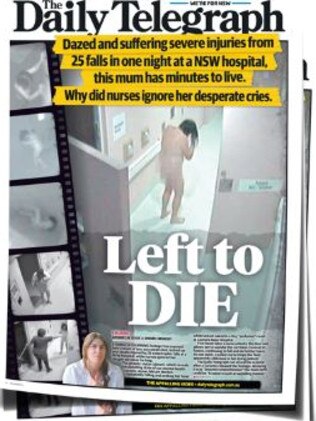
The report also lambasted the lack of leadership from hospital bosses to “address stigma and discrimination … sometimes by mental health staff, and at other times by emergency department staff, NSW Police and NSW Ambulance”.
The review falls short of banning seclusion across NSW Hospitals.
However it calls for a comprehensive overhaul of the system, including 24-hour monitoring of facilities and new “minimum standards and skill requirements for all staff working in mental health”.
Its report — titled “Review of seclusion, restraint and observation of consumers with a mental illness in NSW Health facilities” — was the result of community consultations, interviews with more than 300 frontline mental health and emergency department staff and more than 300 mental health and emergency department leaders, site visits to 25 facilities and more than 100 written submissions.
It said there were nearly 3700 episodes of seclusion in 2016—17, with 2200 patients locked away.
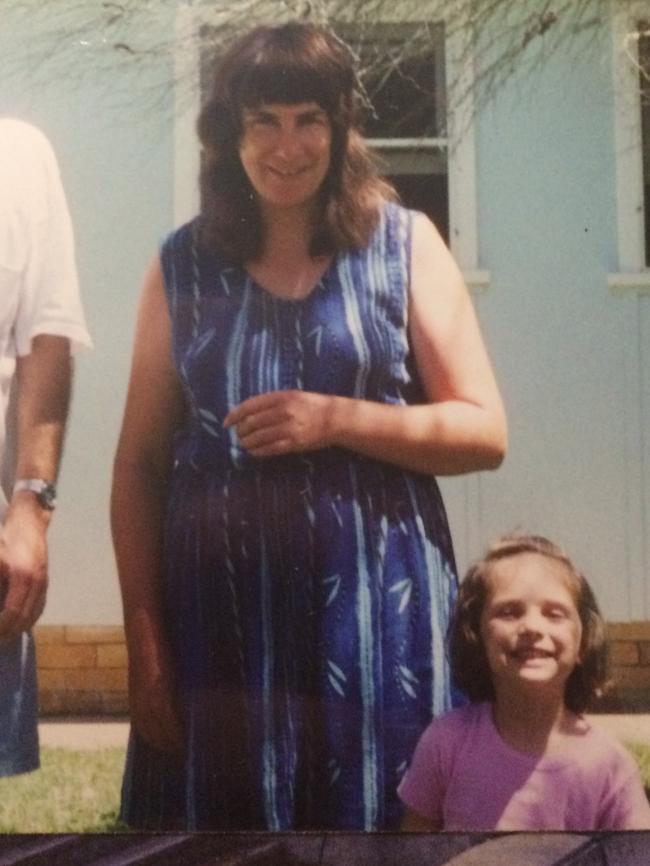
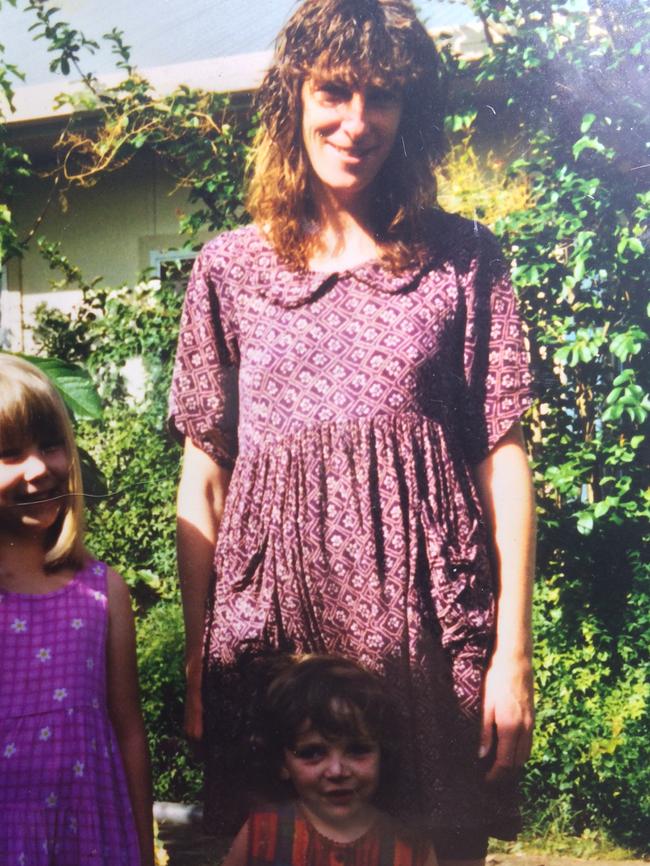
On average they spent five-and-a-half hours in seclusion.
However, these statistics do not include emergency departments.
“There is no statewide reporting of seclusion and restraint in declared emergency departments,” the report found.
“There has been a reduction in the use of seclusion over the last 10 years (in NSW), but the rate of reduction appears to have slowed.”
The review found that while there was no data regarding seclusion in mental health hospitals, it was often the worst setting for patients.
“The culture in some emergency departments was overtly stigmatising and discriminatory towards mental health consumers and, in some instances, towards mental health staff as well,” it found
“At times, this was displayed by nursing and medical emergency department leaders who were apparently unaware or unconcerned that their behaviour and language enabled a culture of discrimination, poor practice and consequent harm for consumers.”
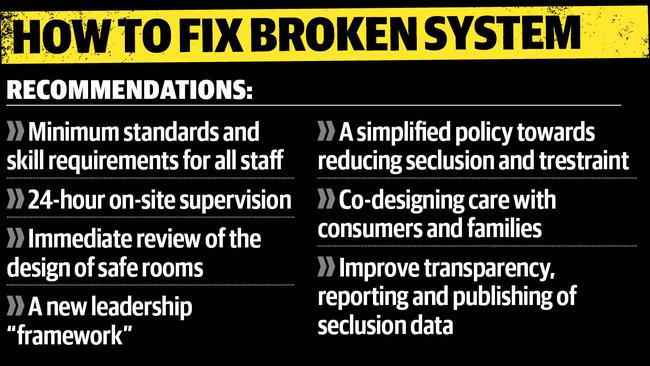
One recommendation was that NSW Health “improve the transparency, detail and frequency of publication of seclusion and restraint data at the state and local level”.
NSW Mental Health Minister Tanya Davies said $20 million would be made available immediately for acute mental health facilities to update their centres and buy new equipment.
She vowed the Wright review would be a “turning point” for the system.
“I am absolutely confident that this is a turning point,” she said.
“My number one priority moving forward will be to ensure I get regular reports about how the system is tracking in the implementation of these recommendations,” she said.
“I am determined to ensure this is going to deliver the change that we all know we need.”
Ms Davies said the clinical advice was that seclusion rooms should not be banned — but that there was a pathway that would stop the “innapproriate” use of the practice.
Dr Wright said the report was “dedicated to the memory of … Miriam Merten, whose mistreatment and death shocked us all, and was the catalyst for establishing this review”.
“Public and professional outrage spurred this review … to make recommendations to reduce, and where possible eliminate, the use of seclusion and restraint in NSW,” the report says.


